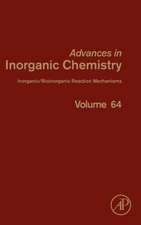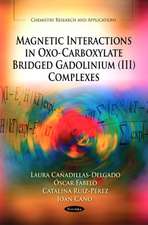High-Temperature Chemistry of Silicates and Other Oxide Systems / Vysokotemperaturnaya Khimiya Silikatnykh I Drugikh Okisnykh Sistem / Bьicoкotemпepatуphaя Xиmия Cиликathьix И Дpугиx Oкиchьix | Cиctem
Autor N. A. Toropoven Limba Engleză Paperback – 8 oct 2012
Preț: 392.97 lei
Nou
Puncte Express: 589
Preț estimativ în valută:
75.20€ • 80.41$ • 62.70£
75.20€ • 80.41$ • 62.70£
Carte tipărită la comandă
Livrare economică 17 aprilie-01 mai
Preluare comenzi: 021 569.72.76
Specificații
ISBN-13: 9781468472110
ISBN-10: 1468472119
Pagini: 232
Ilustrații: XI, 216 p. 10 illus.
Dimensiuni: 210 x 279 x 12 mm
Greutate: 0.53 kg
Ediția:1966
Editura: Springer Us
Colecția Springer
Locul publicării:New York, NY, United States
ISBN-10: 1468472119
Pagini: 232
Ilustrații: XI, 216 p. 10 illus.
Dimensiuni: 210 x 279 x 12 mm
Greutate: 0.53 kg
Ediția:1966
Editura: Springer Us
Colecția Springer
Locul publicării:New York, NY, United States
Public țintă
ResearchCuprins
I. Liquation or the Formation of Immiscible Liquids in Silicate Systems.- II. The Three-Component System Lithium Oxide-Alumina-Silica.- III. Stable and Metastable Phase Relations in the System Magnesium Oxide-Alumina-Silica.- IV. Phase Diagrams of Systems Formed by Oxides of Elements of Variable Valence.- 1. Methods of Determining Phase Equilibria in Oxide Systems.- 2. Methods of Constructing Phase Diagrams.- 3. Ternary Systems Containing Iron Oxides.- 4. Equilibrium Crystallization Routes.- 5. Latest Research on the Manganese-Oxygen System.- V. Thermodynamic Investigations of Binary Oxide Systems.- 1. Determination of the Free Energy of Reactions in Oxide Systems by Measuring the Electromotive Forces of Galvanic Cells with Solid Electrolytes.- 2. Some Oxidation-Reduction Equilibria Used for Obtaining Thermodynamic Characteristics of Reactions Between Oxides.- 3. Thermodynamic Activity of Oxides in Solid Solutions of Oxide Systems.- VI. Diffusion Processes and Kinetics of Reactions in the Solid State.- 1. Investigation of Reactions in the Solid State.- 2. Effect of the Gaseous Atmosphere on Reactions in Solids.- 3. Kinetics of Reactions in Crystalline Oxide Systems.- VII. Lower Compounds of Silicon with Oxygen.- 1. Solid Silicon Monoxide.- 2. Thermodynamic Properties of Silicon Dioxide at High Temperatures.- 3. Investigation of Oxidation-Reduction Equilibria Involving Silicon Monoxide.- 4. Thermodynamics of Reactions Involving Silicon Monoxide and Thermodynamic properties of SiO.- VIII. Evaporation of Oxides of Alkaline Earth Elements and Energy Characteristics of Gaseous RO Molecules.- 1. Results of Investigating Evaporation of Beryllium, Magnesium, Calcium, Strontium, and Barium Oxides.- 2. Energy Characteristics of Gaseous Oxides of Alkaline Earth Elements.- IX. Evaporation of Oxides of Group III Elements (Including Rare Earths).- 1. Question of Existence of Solid Lower Oxides of Aluminum.- 2. Evaporation of Aluminum Oxide.- 3. Evaporation of Gallium, Indium, and Thallium Oxides.- 4. Evaporation of Rare Earth Oxides.- X. Evaporation of High-Temperature Oxides of Group IV–VI Elements.- 1. Evaporation of Germanium, Titanium, Zirconium, Hafnium, and Thorium Oxides.- 2. Evaporation of Vanadium, Niobium, and Tantalum Oxides.- 3. Evaporation of Chromium, Molybdenum, Tungsten, and Uranium Oxides.- 4. Some Generalizations of the Results of Investigating the Evaporation of Oxides.- XI. Fibrous Crystals of Highly Refractory Oxides.









